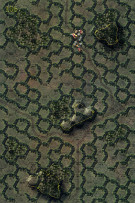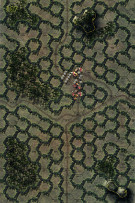|
|
|
Total |
| Side 1 |
0 |
| Draw |
1 |
| Side 2 |
1 |
|
Total |
| Side 1 |
0 |
| Draw |
0 |
| Side 2 |
1 |
|
Total |
| Side 1 |
0 |
| Draw |
1 |
| Side 2 |
0 |
|
| Overall Rating, 3 votes |
|---|
|
|
|
Scenario Rank:
--- of 940 |
| Parent Game |
Invasion 1944 |
| Historicity |
Historical |
| Date |
|
| Start Time |
00:00 |
| Turn Count |
20 |
| Visibility |
Day |
| Counters |
67 |
| Net Morale |
0 |
| Net Initiative |
2 |
| Maps |
2: 106, 107 |
| Layout Dimensions |
56 x 43 cm
22 x 17 in |
| Play Bounty |
152 |
| AAR Bounty |
227 |
| Total Plays |
2 |
| Total AARs |
0 |
|
Introduction
|
|
The 29th Infantry was battered and needed a long rest. Therefore when General Gerhardt informed his commanders of his intention of reaching St. Lo at any cost this stunned the battalion commanders who worried about simply holding their positions. Gerhardt brushed aside objections and ordered his staff to formulate plans with Major Thomas Howie's battalion given the difficult assignment of reaching Sidney Bingham's isolated battalion. Howie understood that drastic measures would be required as he informed his company commanders of their objectives.
|
|
Conclusion
|
|
Just after 0730 Major Howie briefed his company commanders on the coming mission when an enemy mortar barrage hit. Major Howie waited until he was sure all his men were safe before he attempted to reach his own foxhole. It was the last thing he ever did as shrapnel pierced his lung causing death within minutes. Gerhardt would order his flag-draped body brought into a liberated St Lo on the hood of a jeep so that he would be the first American into the city, and had it prominently displayed as a symbol of the sacrifices endured by his soldiers. American public fancy was captured by a poem in Life Magazine and as no name had been used due to wartime censorship this brave man became known simply as the Major of St. Lo.
|
Display Relevant AFV Rules
| AFV Rules Pertaining to this Scenario's Order of Battle |
- Vulnerable to results on the Assault Combat Chart (7.25, 7.63, ACC), and may be attacked by Anti-Tank fire (11.2, DFT). Anti-Tank fire only affects the individual unit fired upon (7.62, 11.0).
- AFV's are activated by tank leaders (3.2, 3.3, 5.42, 6.8).
They may also be activated as part of an initial activating stack, but if activated in this way would need a tank
leader in order to carry out combat movement.
- AFV's do not block Direct Fire (10.1).
- Full-strength AFV's with "armor efficiency" may make two anti-tank (AT) fire attacks per turn
(either in their action segment or during opportunity fire) if they have AT fire values of 0 or more
(11.2).
- Each unit with an AT fire value of 2 or more may fire at targets at a distance of between 100% and 150% of its
printed AT range. It does so at half its AT fire value. (11.3)
- Efficient and non-efficient AFV's may conduct two opportunity fires per turn if using direct fire
(7.44, 7.64).
Units with both Direct and AT Fire values may use either type of fire in the same turn as their opportunity fire,
but not both (7.22, 13.0).
Units which can take opportunity fire twice per turn do not have to target the same unit both times (13.0).
- Demoralized AFV's are not required to flee from units that do not have AT fire values (14.3).
- Place a Wreck marker when an AFV is eliminated in a bridge or town hex (16.3).
- AFV's do not benefit from Entrenchments (16.42).
- AFV's may Dig In (16.2).
- Prime Movers: Transports which only transport towed units and/or leaders (May not carry personnel units). May or may not be armored (armored models are open-top). All are mechanized. (SB)
|
United States Order of Battle
| 1 Errata Item |

|
Reduce strength direct fire value be came 5-5 in Army at Dawn.
|





 IN44023
IN44023 





















